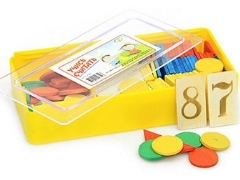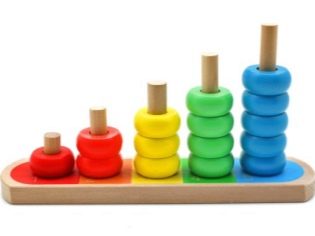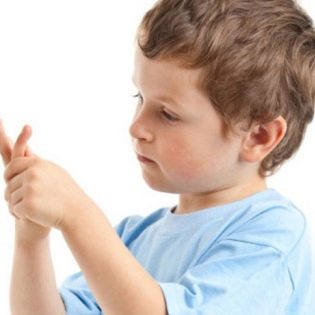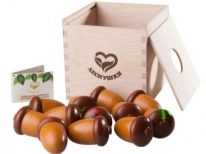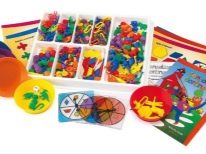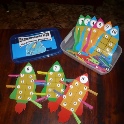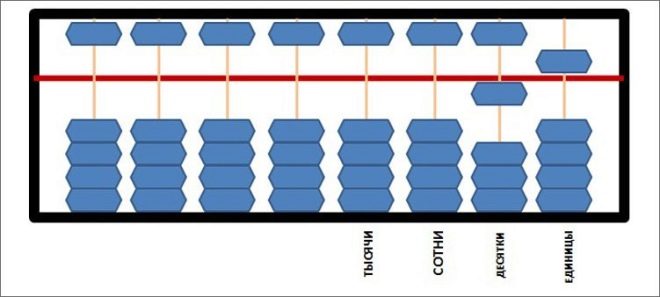Counting material for teaching children
In order for the child to successfully learn the basics of mathematics, adults often have to use various visual aids. Among them, a special place is given to the counting material. Choosing it among a huge variety, you need to choose the option that will be convenient for you and interesting for children.
Selection features
In mathematics classes, items are elements of a set with which you need to perform certain actions. Concerning them, a specific question of their quantity can be raised. It does not clarify any points that may be of interest in classes on another subject. For example, if we are talking about birds on a branch, then it absolutely does not matter what kind of birds they are.
In mathematics, attention is paid only to the number and quantity relationship. In order for the material to become clear to children, counting material is often used.
This type of visual aids includes counting sticks, abacus, counting boards, or, as they are called differently - abacus, arithmetic box, geometric mosaics, various sets of thematic or geometric figures for the account, cash register counting materials.
Choosing the right tools for teaching children will make learning entertaining and exciting. The importance of this is due to the fact that kids, up to the beginning of primary school education, learn and memorize the new much more effectively if they are interested.
Among the factors that determine your choice should be the materials from which the sets are made, the appropriate age of the children, the preferred forms.
Manufacturing materials
For the manufacture of sets of counting material used a variety of materials. It can be cardboard cards, high-strength plastic or wooden figures, elements on magnets. When making a choice in favor of a material from which the counting material is made, one should first of all take into account its safety and environmental friendliness.
So, benefits made of wood are considered environmentally friendly and pleasant to the touch. As a rule, they are painted by hand with safe non-toxic paints. High-quality plastic figures can last longer and have a lighter weight, unlike wooden ones. You should choose only high-quality high-quality plastic, which has no extraneous odors. It is easy to make the necessary materials from cardboard and you can even involve the child in this process. Cards on magnets are convenient to use for the teacher on the board to demonstrate a large number of children. Also, they are suitable for those who have a small magnetic board at home.
Popular Math Sets
We offer an overview of the most popular and sought-after kits for teaching the account of young children.
Set "Learn to count" from the manufacturer "Red Star"
It is very convenient to store the kit at home or in the class in a plastic case that comes with it. The very same calculating material is wooden, which makes it absolutely safe. The kit includes:
- counting sticks (20 pcs);
- squares are green, red and blue;
- circles of red, yellow, green;
- squares (two types and colors);
- plates: numbers and signs (28 pieces).
This set can be used in the classroom with children 5-10 years old at home, in kindergarten and school. With it, the baby will be able to get acquainted with the basics of geometry, numbers, learn how to perform simple calculating operations.From geometric shapes, the child will be able to fold fancy pictures, developing imagination and fine motor skills. He will also be able to learn how to find patterns and continue the sequence, which will contribute to the development of logical thinking, learn to compare, reason, classify and draw conclusions.
Cash register of numbers and counting materials "Learn to count" from plastic from Stamm
A good set that can be used from the age of five. The set includes 132 elements of high-quality plastic - geometric shapes, calculating sticks and numbers, which are packaged in a convenient plastic case.
With it you can acquaint the crumb with numbers, geometric shapes. Children will be able to make up numbers and learn how to solve examples and problems.
Mathematical set on magnets Taruntaeva T. V.
The kit is designed to work on a magnetic board in such sections as:
- account with the change of the basis of the account and by conceptual measure;
- the development of the ability to classify;
- the ability to divide the whole into equal parts;
- the relationship between the whole and the part;
- sets, union of sets;
- problem solving;
- composition of numbers.
The set includes geometric shapes made of laminated cardboard - red, yellow, green and blue colors. Magnets on them must be mounted independently.
Complete set:
- division of the circle (diameter 20 cm) - 1, 1/2, 1/3, 1/4, 1/5, 1/6, 1/8, 1/9, 1/12.
- A square with a side of 12 cm and its division into parts in two ways 1, 1/2, 1/4, 1/5, 1/8, 1/9.
- A circle with a diameter of 8 cm - 12 pcs. one color, 6 pcs. - other, 1 piece - 1/2 + 1/2.
- Counting sticks up to 10 in length with a step of 2.5 cm and up to 7 in width with a step of 1.5 cm.
- Geometrical figures: square, equilateral triangle, a circle of two colors of 10 pieces each.
- Numbers and signs.
- Additional geometric shapes: rhombus (1 piece), trapezium (2 pieces), equilateral (3 cm, 1 piece), obtuse-angled (1 piece) and rectangular (1 large and 2 small) triangles, circle with a diameter of 3 cm (10 pieces) .
Cash desk of accounting materials Fancy "Learn to count"
The set includes such geometric shapes as square, circle, rectangle, hexagon - 10 pieces each, triangles with angles of 30 ° and 45 ° - 20 pieces each. There is also a set of numbers from 0 to 9 - 2 pieces each, signs and counting sticks - 20 pieces.
Selection by age
To work with counting material in kindergarten, you should choose bright and colorful allowances. With the help of interesting design it is much easier to attract the attention of preschoolers and make learning fun interesting game. It must be periodically changed so that the guys are constantly passionate about the learning process. Today you can work with hedgehogs, at the next lesson count how many birds have flown.
For younger children, choose beautiful bright figures, sets with which you can teach a child up to 20. Older preschoolers are already trying to go to school as soon as possible. At this age, children may like kits in a beautiful box, because it is a necessary attribute of schooling.
Children of 6-7 years old and elementary school students, who have already learned about the basics of kindergarten preparatory groups, can be offered a variety of sticks and cash registers. Using them, you are no longer attached to the game activity. The manuals help the child visually and facilitate the perception of the mathematical operations that need to be carried out. With the help of them, it is easier for a primary school student to navigate the connections between the abstract and the concrete.
The best forms for perception
Children under 5 years old will be able to use counting material in the form of various figures. It can be apples, mushrooms, nesting dolls, various vegetables, transport, animals. With the help of such forms you can play a lot of different situations for teaching a child to count. Today hedgehog will bring mushrooms, and squirrel apples. Tomorrow you will count how many vegetables you will add to the soup. Later distribute the carrot hare. The most important thing at this age is the game, which should not be forgotten by an adult working with a child..
It is also necessary to use volumetric numbers in order for the child to relate the concept of number and numbers. He will remember each digit much better, if he can touch it, hold his finger along each line. After all, tactile perception plays a huge role in the development of the crumbs from a very young age.
Older children of preschool age and primary school students can already offer various geometric shapes as a calculating material, which can also be used as a mosaic. Thus, the child will be able to remember the name of the forms, learn the basic colors, will lay out various pictures of the details.
Also, children of this age may like sets with cubes of 1 cm in size. Such sets can be used not only for counting. With the help of them, the child will learn to sort, build graphic images, get acquainted with the concepts of "perimeter", "volume", "area".
Counting sticks are a universal development tool for children of all ages. The smallest will require strict adult control. With their help, you can begin to develop a child from 9 months. They will help develop fine motor skills, learn colors, many different concepts, such as "one-many", "wide-narrow", "long-short", etc.
They help teach a child to compare, find similarities and differences, contribute to sensory development, develop logic, imagination, and the ability to think outside the box. With the help of sticks, the child will be able to get acquainted with the basics of geometry. And, of course, they will help in teaching the child the account, acquaintance with the basic mathematical operations.
How to do it yourself?
Any parent will be able to do the calculating material with his own hands, which will significantly save the family budget. You can make it from improvised tools that are at home:
- Numbers
- Account from 1 to 10
- The composition of the number
- Subject pictures
- Geometric figures
- Math Puzzles
Also in the work you can use beads, clothespins, appliques of fabric, various waste material.
Various options weight it is worthwhile for an adult to turn on his imagination and express himself. You can cut and glue from cardboard, you can sew and knit, you can draw - do what you like. For a child, the benefits that are made with love by his mother will be the most loved ones.
How to learn calculations?
In order to teach a child to calculate, you can use the most diverse calculating material: abacus, abacus, sticks, cards, various ready-made sets of calculating materials, etc. In the classes in elementary classes, teachers also use all these manuals to teach children various calculating operations.
Advantages of using counting materials:
- visual demonstration of computational actions performed;
- availability of understanding of the meaning of arithmetic operations;
- the use of counting materials helps in the development of fine motor skills;
- accessibility - you can always find the counting material at hand, without gaining anything special.
Cons of using counting materials:
- the habit of using any objects for counting sometimes complicates the child’s transition from the objective environment to the abstract-mental form;
- The choice of various counting materials is great. Adults who are not experts, it is sometimes difficult to understand the method of training for a particular benefit.
With the help of an abacus
Abacus resembles Soviet abacus in many ways. It is a wooden frame with knitting needles, which are strung on 5 knuckles. The number of needles may be different. Spokes pass through the bar, which separates the knuckles. There is one knuckle above the needle, four under it.
With abacus score The ability to work with your thumb and forefinger is very important. With the help of multiple repetitions, it is necessary to bring it to automatism. Keep in mind that this skill is quickly forgotten without regular training.
Number lines layout: Each digit occupies its own needle. The knuckle under the dividing bar indicates 1, above the dividing bar - 5. Consider a specific example. The number 3 on the abacus will be marked like this:
The number 15 looks like this:
Here, one knuckle rises on a tens-spoke spoke, and in units we omit the knuckle, which denotes 5.
Thus, numbers are deposited on the abacus and various counting operations are performed. With it, you can add, subtract, multiply, divide and even raise a power. However, such complex operations are already the basics of mental arithmetic, for which you can get acquainted with which it is better to attend the course of relevant classes.
Counting material is necessary when teaching children to do mathematics at home, in kindergarten and school. In stores, it is presented in a wide variety. But it is not always convenient to use purchased items. Among your things, you can find something that will appeal to your baby more. Learn the mathematical basics with your baby with pleasure and necessarily playing, then the learning process will be much easier.
About what countable material, see the following video.
